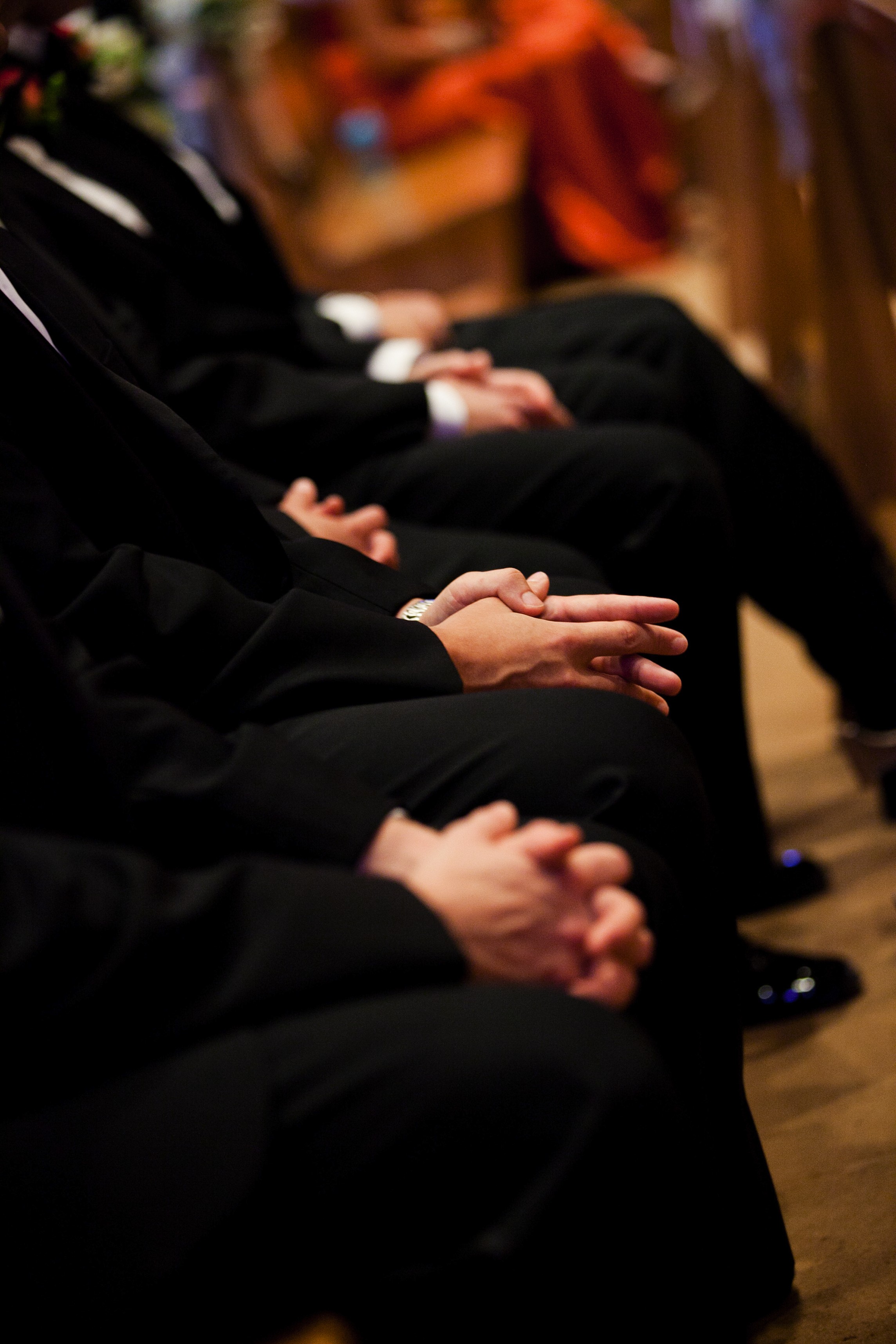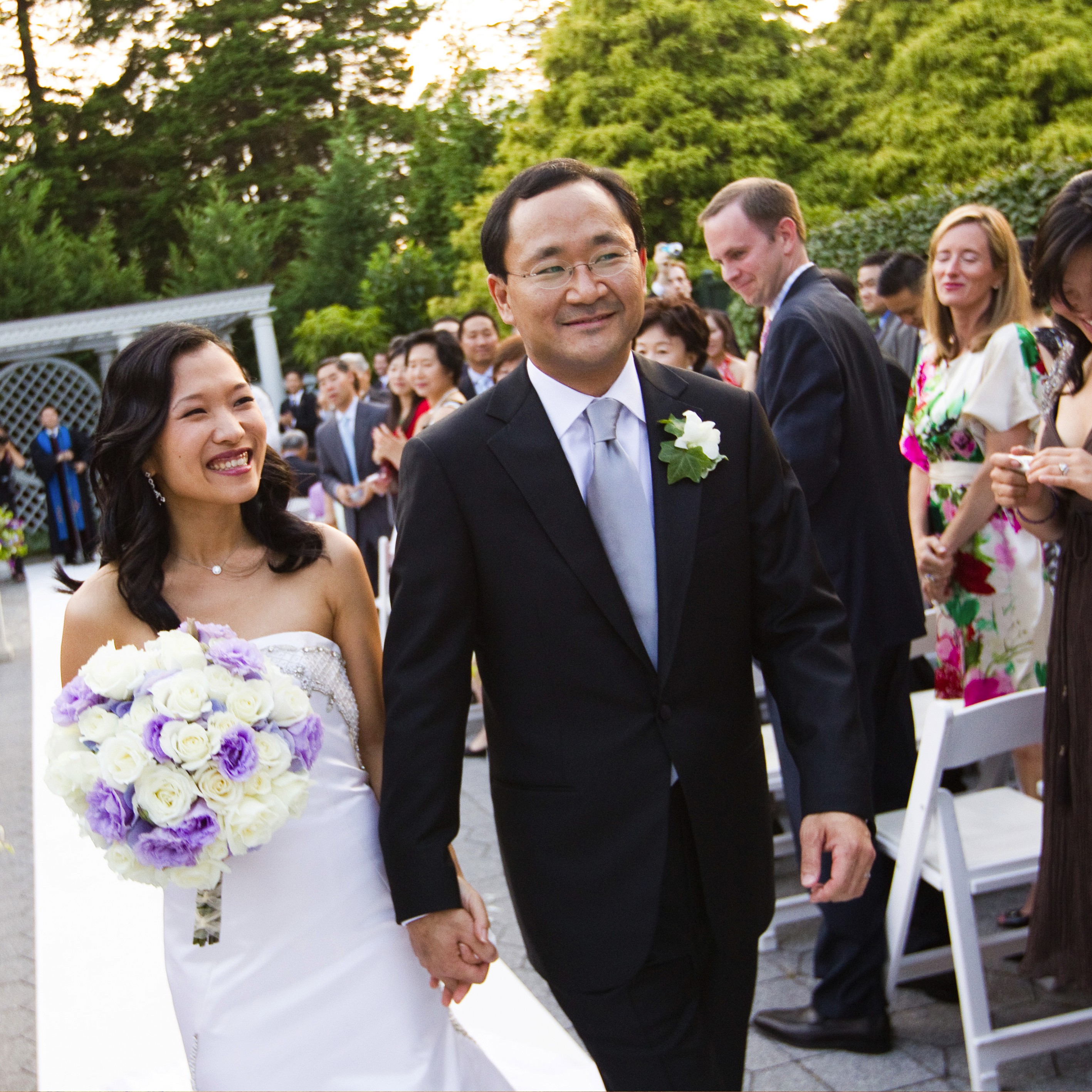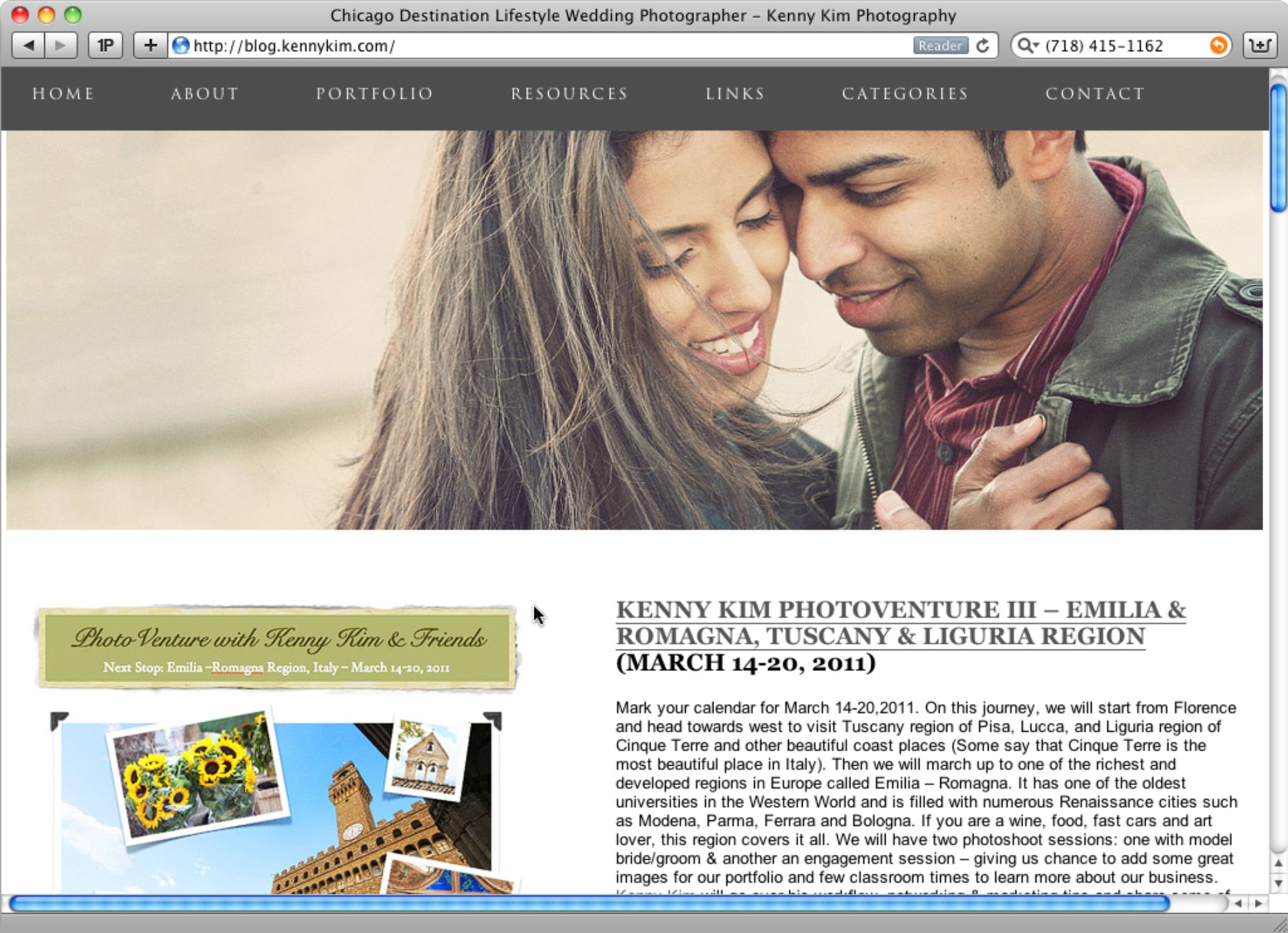Chapter 4: Developing a Style
With so many wedding photographers out there today, the question is, how will you stand out and set yourself apart from all the others? If a prospective client asks you this same question, how will you define your style? Some different styles have already been established with wedding photography, including the traditional style and photojournalistic style. Many other wedding photographers use random words to describe their style, such as modern or edgy, but what does that actually mean to you? It is important to learn about some of these different styles and most important, to experiment and find where your photography fits in. In the end you have to develop a personal style that is unique and makes you stand out in a positive way. This doesn’t mean that you should shoot each and every wedding the exact same way every time; you need to be flexible and to be able to mix styles depending on the situation. For example, the portraits can be more traditional, while photographs of the ceremony and reception can be more photojournalistic. And sometimes the client will hire you based on your creativity. In Figure 4-1, I broke the rules of composition and cropped the image in a way that was unexpected.
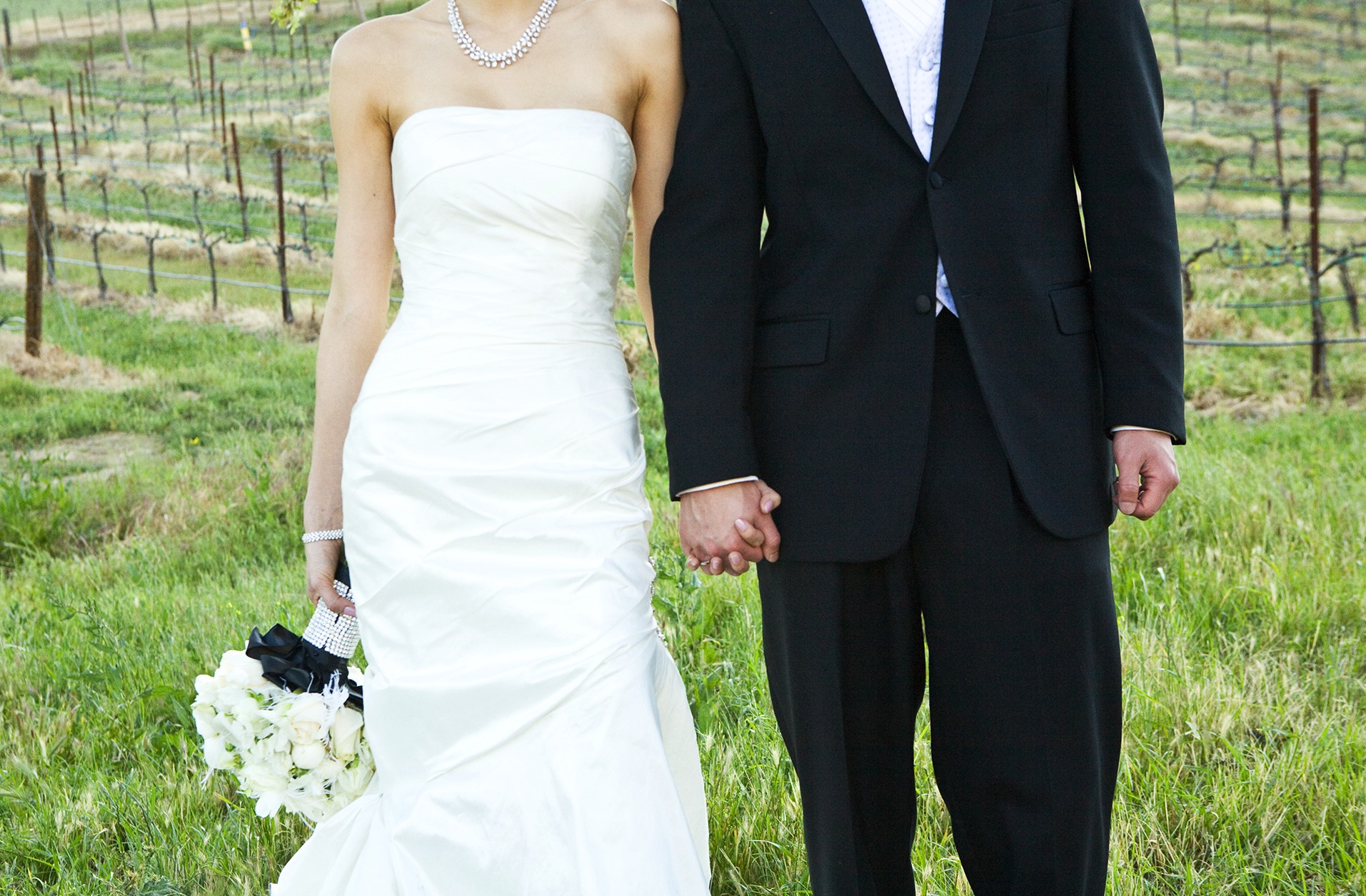
4-1
ABOUT THIS PHOTO The nontraditional crop of this image allows the viewer to see the couple in a different light and does bring the focus more to the attire and the hands. Taken at ISO 640, f/6.3, and 1/400 second.
The more traditional approach for this shot would be to capture the couple at full length from head to toe with some room around them showing the background for a sense of location. I took the safe traditional shot first, but then increased the focal length so that the image focused in on their bodies, which allows the viewer to focus on different aspects of the couple. And even though you cannot see their faces, there are enough details present that the couple recognize themselves. I also liked the way their holding hands implies the love and affection for each other and allows the viewer to see them in a way that you would not normally see them.
What is style?
In the past, clients didn’t have many options to pick from when it came to wedding photography styles. There was a traditional style, which involved a lot of very formal poses and taking photos in a studio before or after the wedding day. As smaller cameras were introduced and became easy to use, a new breed of wedding photography style emerged. This style was based more on reporting the day and considered a photojournalistic style. Nowadays many wedding photographers mix the styles into something that is unique to them.
Traditional
Traditional wedding photography consists of taking a set of posed wedding images. Each photograph is meticulously set up and controlled. The subjects are carefully arranged in the frame and posed, usually looking directly at the camera. The final set of images all have the same look and feel to them, creating a very uniform wedding album. Traditional wedding photographers are usually very skilled in portrait photography, as that is what they mainly do. This skill is really important, and every wedding photographer needs to study the traditional methods of posing not only the bride and groom but groups as well. The portrait style of the traditional wedding photographer has lasted since weddings were first photographed and is still very much in use today. The reason for this is that many people like this style and like the posed look to their images, and I used that when setting up the group portrait, as shown in Figure 4-2. When done well, traditional wedding portraits can be absolutely beautiful. Study the masters of the past, especially the posing methods they used and the way they used the light to flatter the subjects.
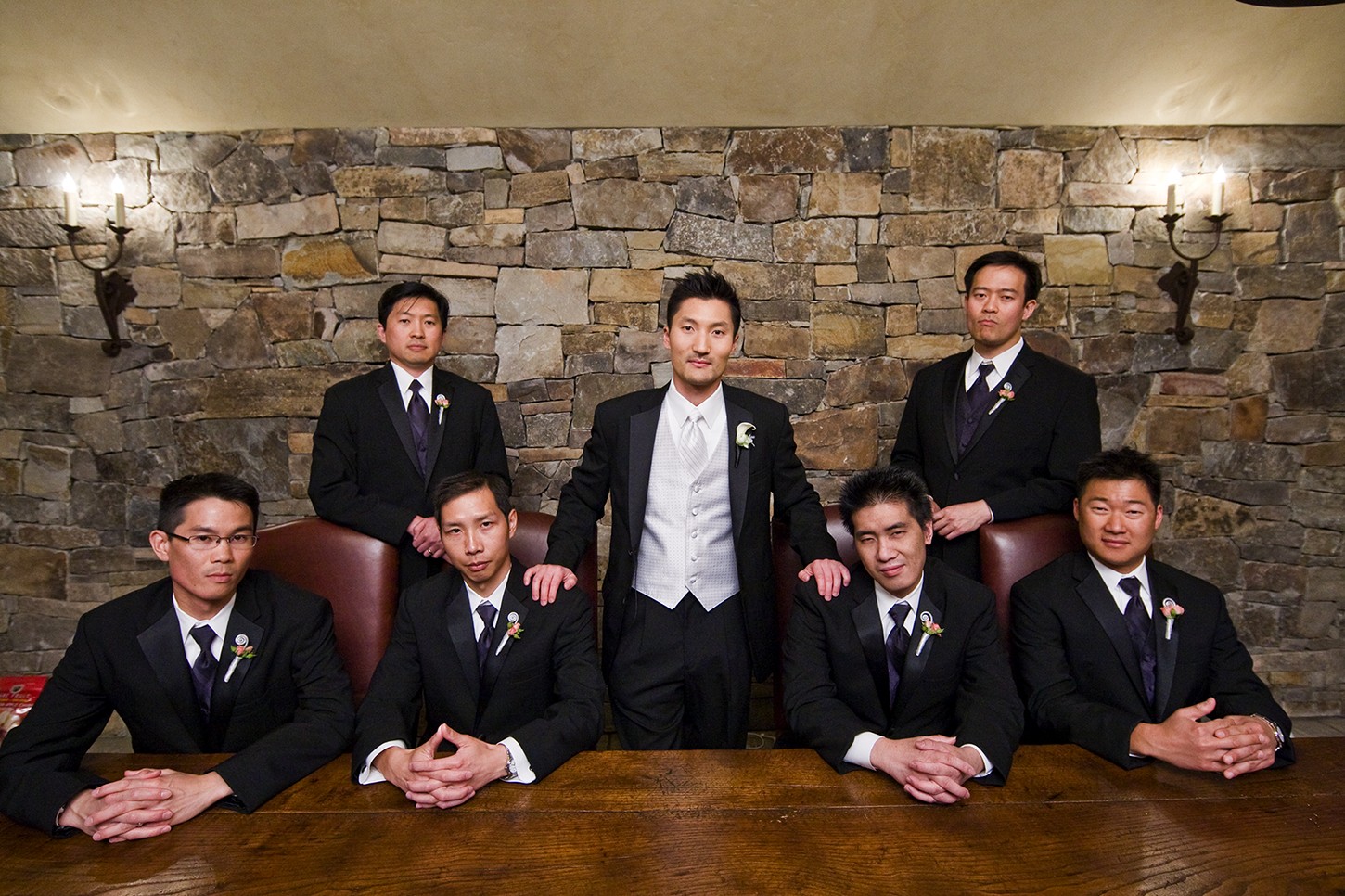
4-2
ABOUT THIS PHOTO The groom and his groomsmen posed traditionally. Taken at ISO 1250, f/4, 1/80 second.
One of the defining qualities of the traditional style wedding photographs is that there are rarely any candid images, and this can result in some missed opportunities. And since it can take a lot of time to set up each shot and nothing is spontaneous, this style might sound a little boring to some photographers. The results can also seem to lack some of that wedding day energy, and the subjects might look a little stiff and uncomfortable. Not everyone is at ease in front of the camera, and part of making this style work is the skill the photographer has to get the subjects to be comfortable in front of the camera. One final point to consider is that many times the photos from one wedding will look just like the photos from another wedding because the poses and lighting are identical. This is not necessarily a bad thing, since many times you are hired based on your past work, and if the clients really like that style of wedding photograph, you will be delivering them exactly what they want.
On the plus side, this style of photography can create a beautiful set of images that any bride and groom will appreciate, such as the portrait of the bride shown in Figure 4-3.
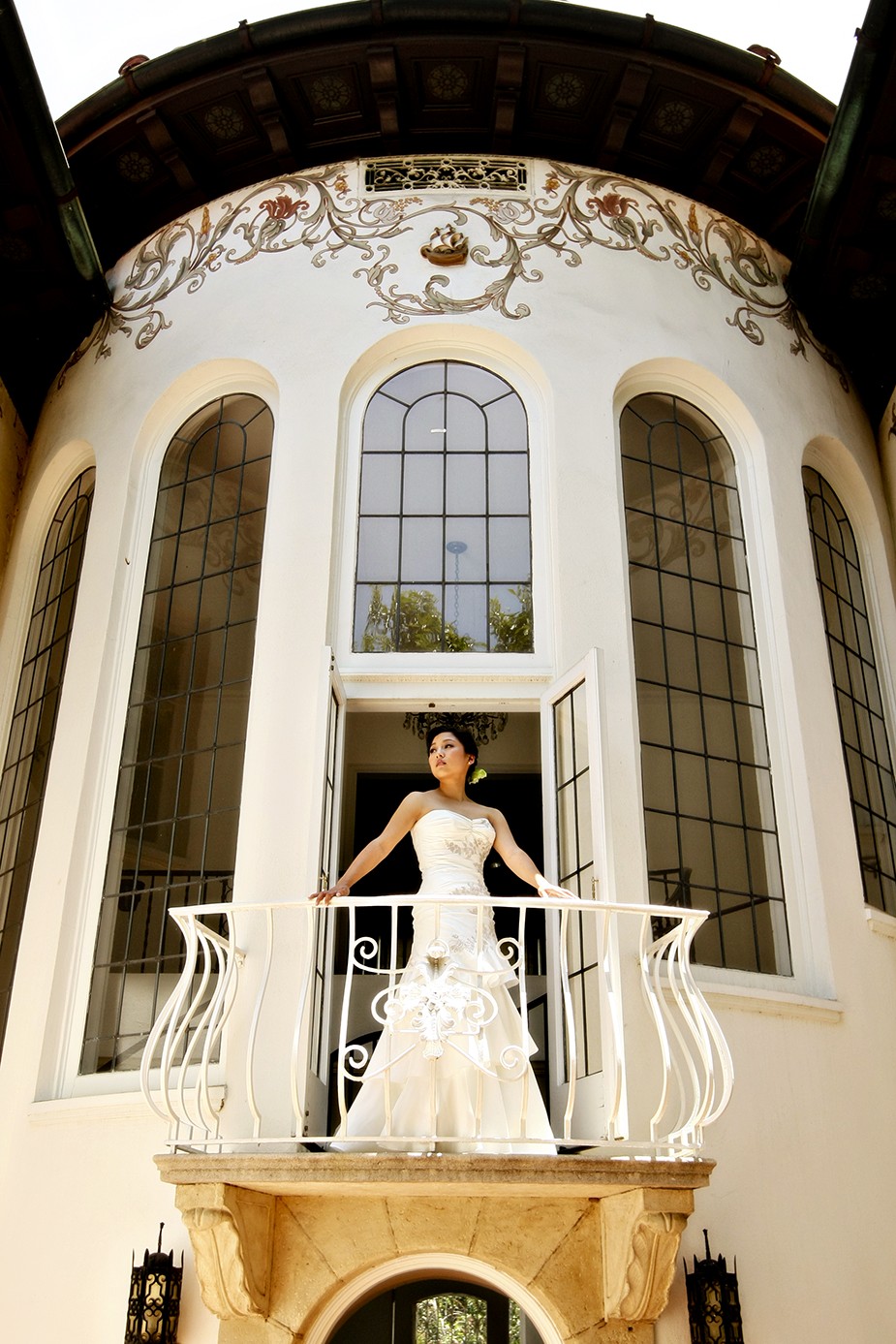
4-3
ABOUT THIS PHOTO The bride posed, taken at ISO 400, f/5, 1/500 second.
Photojournalism
Photojournalism is a method of reporting on a news story or event using images to tell the story. This style of photography has become really popular with wedding photographers and their clients and, instead of focusing on posed images, it focuses more on capturing the wedding day through candid photos, much like a reporter covers a story. The photojournalist-style wedding photographer tries to go unnoticed to be able to capture the real, raw emotions being displayed. Many people love the natural look and feel of these images because they tend to more closely match their memories of the day. Clients who have grown up with cell-phone video and snapshots will also be more comfortable with this type of photography because they take candid photos and footage themselves. These clients tend to appreciate the authenticity of these types of images. Because the intent of a photojournalistic style is to capture the moment when it happens rather than set it up as a posed shot, you have to train yourself to be on the lookout for those special moments, and more important, you have to be able to capture them as they happen. Take the reactions to a slide show in Figure 4-4; this moment could never be posed. One of my favorite photographers, Joe Buissink, taught me this trick: Whenever you see a “moment,” even in your everyday life, train yourself to see it by snapping your fingers or saying “click” to yourself. It can be any type of moment as long as it reminds you to react to it.
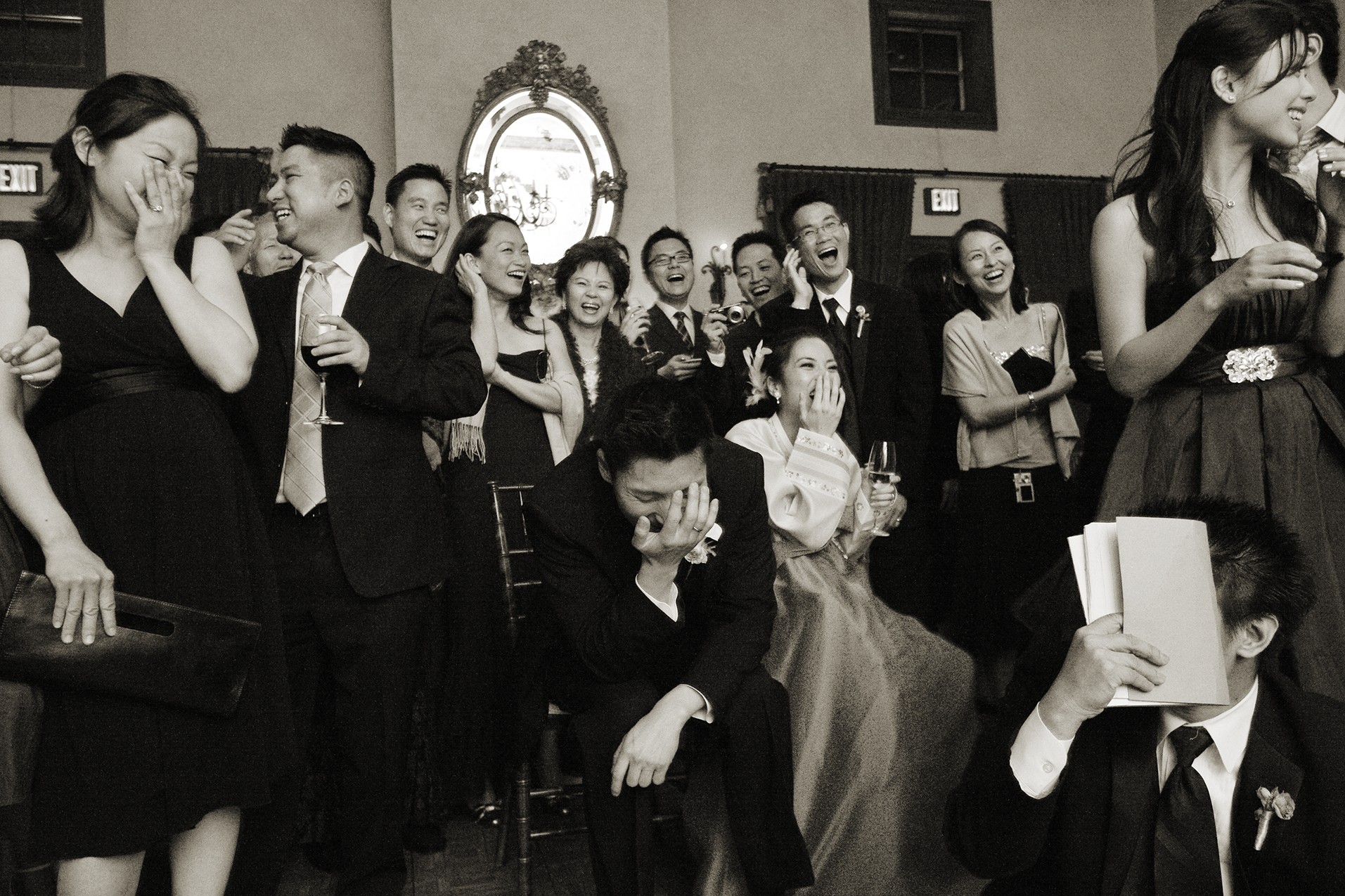
4-4
ABOUT THIS PHOTO The groom and bride react to the slide show. Taken at ISO 2000, f/4, and 1/40 second.
To be a successful photojournalist, you need to learn the basic mechanics of the camera so that you don’t have to think about them when you’re shooting. Compare this to athletes who use muscle memory, training their bodies to react a certain way by repeating the same routine over and over again. Practice with your camera so that you can adjust the settings without having to think about it because there are no second chances. If you train yourself to adjust your camera automatically as the light and situation change, you can focus on what is going on and capture those moments that unfold as quickly as they happen. To be successful in this style of wedding photography, you need to be prepared to react. Capturing the portrait in Figure 4-5 was easy, but capturing the couple kissing as the local couple looked on was only possible because I was ready for anything.
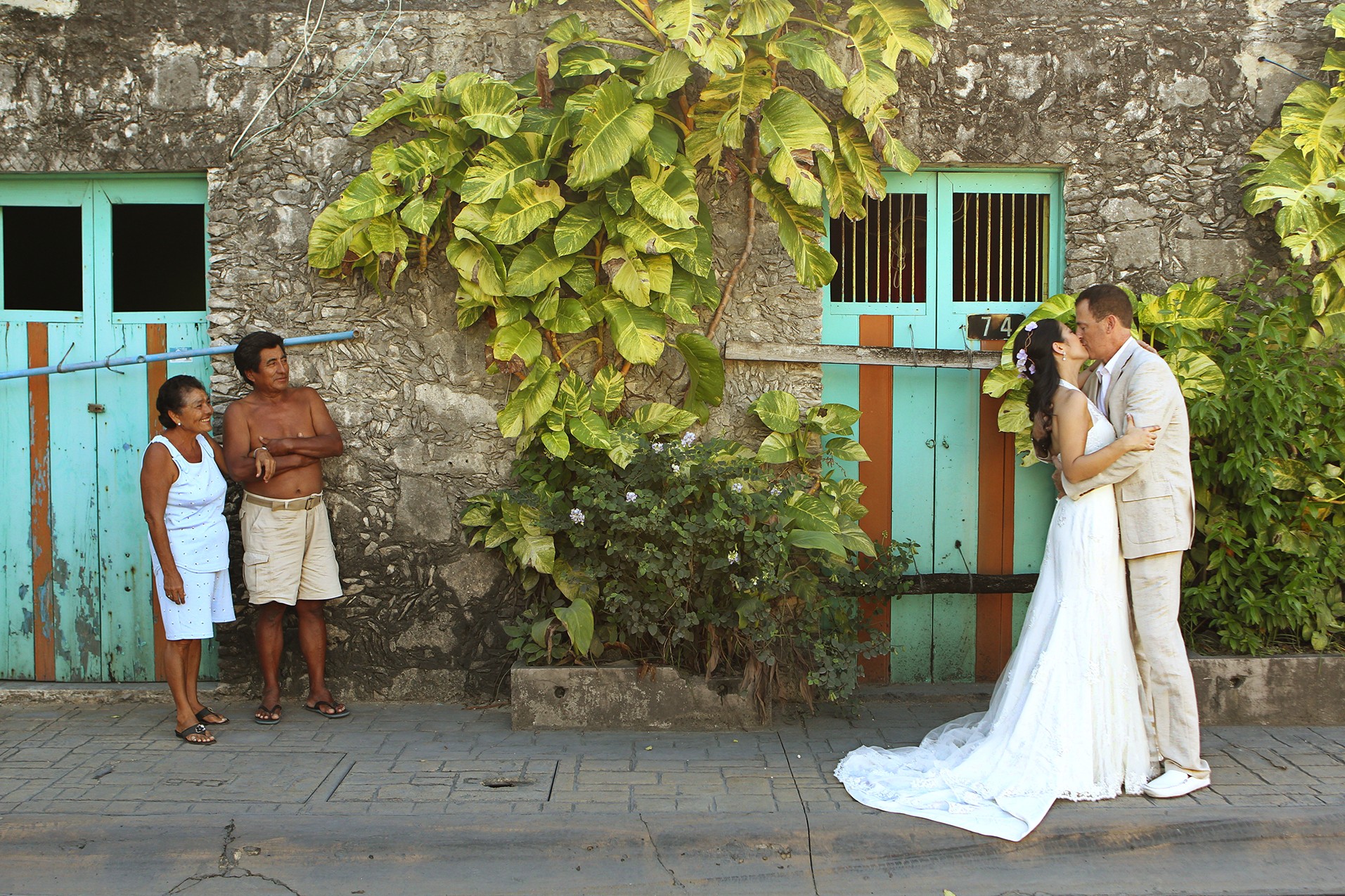
4-5
ABOUT THIS PHOTO The bride and groom along with a local audience. Taken at ISO 500, f/4, and 1/250 second.
It is important to note that just because you call your style photojournalistic, it doesn’t mean that you don’t need to know how to pose your subjects. A good photojournalist will be in charge of the situation and know when to step back and let the scene unfold. On the downside, because many of the images are shot as they happen and not posed, at times the subjects might not look their very best in every shot.
Mixed styles
Most wedding photography today is a mix of styles and not just strictly the traditional and photojournalistic styles. What this ends up looking like is a more traditional set of portrait images along with a set of images that tell the story of the wedding from the bride and groom getting prepared to the ceremony and the reception. Taking the story-telling ability of the photojournalist and combining it with the posing ability of the traditional wedding photographer allows you to offer a more complete package to the client. In my opinion, the ideal wedding photographer uses both of these styles as the client requests or as the situation demands.
For example, the bride getting ready while surrounded by her friends calls for a more photojournalistic approach, while the portraits of her in her dress are definitely more suited for traditional-styled portraits. Covering the wedding reception can be a great mix of styles. Having the bride and groom pose as they cut the wedding cake is a portrait-type shot, more in the traditional style; look for and capture candid moments during the toasts, when the guests’ emotions are on their faces.
When it comes to mixing the styles, it is also possible to photograph the same subjects in more than one way. The groom and groomsmen in Figures 4-6 and 4-7 are photographed in two very different ways. I started with a more rigid and controlled posed image where everyone was placed exactly where I wanted them to be, and then moved onto a more relaxed group portrait with fewer specific directions and tried to let the personalities come out. It is important to note that the second shot, while looser and more relaxed, was not just a random moment, but actually set up and posed.
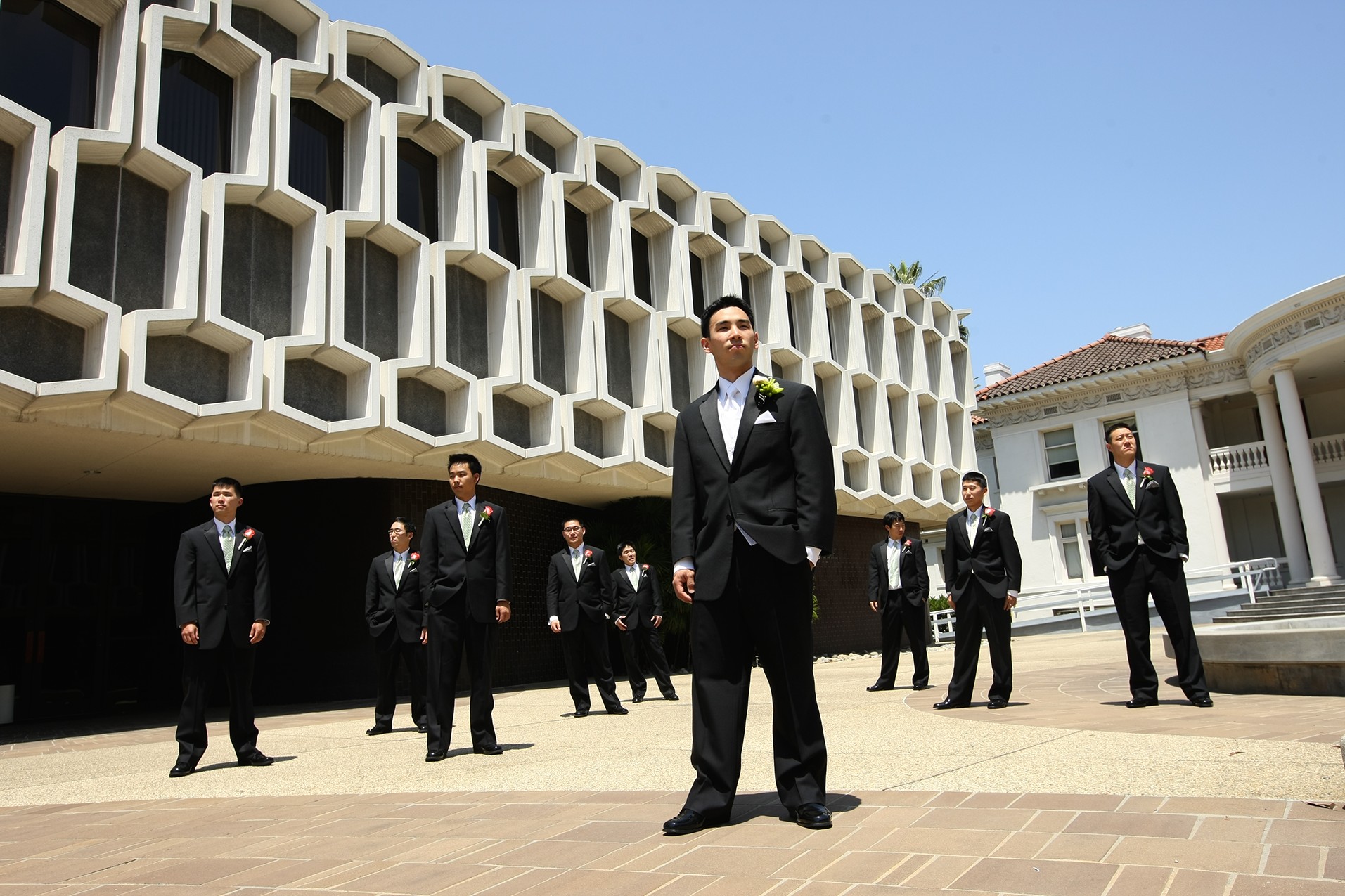
4-6
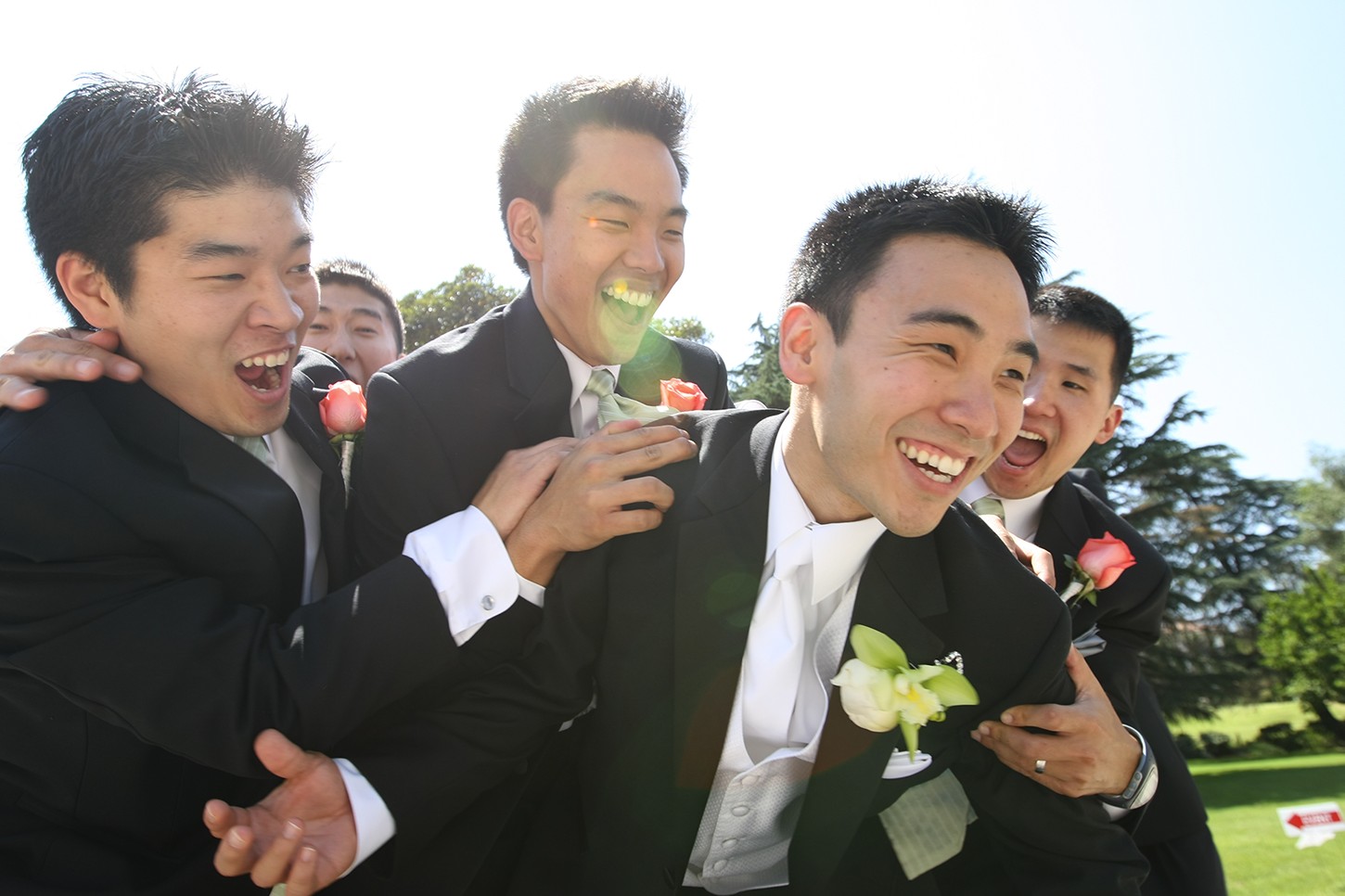
4-7
ABOUT THESE PHOTO These two shots of the same group show two different styles. In Figure 4-6 the men were arranged carefully in a more traditional manner and photographed at ISO 100, f/8 and 1/160 second, and then the group was pulled in close and given more leeway in their action and expression in Figure 4-7. Taken at ISO 100, f/5 and 1/160 second.
The mix of styles doesn’t have to be 50/50 and doesn’t mean you can’t favor one style over the other. How you mix these styles determines your look and personal style. One thing that is true for both styles is that you need to practice, practice, practice — not on the job of course, but in the time between jobs — so that you can constantly improve.
What to look for
When the clients get their wedding images back from their photographer, the images should tell the story of their wedding no matter what style or combination of styles were used.
When telling a story with your images, it is important to not only capture the overall scene but also the details that add depth and interest to the wedding story. The little nuances really help to tell the story just as well as photographs of the overall scene.
This story-telling concept is easily seen in movies and TV shows, especially the well-done movies or TV shows. When you watch a movie, the camera often pans back and forth, showing you the entire scene, then focuses in on an important detail, such as a person’s face or hand, or even other parts of an actor’s body, that conveys the emotion in the scene or an important detail.
Studying different types of media — movies, wedding magazines, fashion magazines, music magazines, music videos, movies, television shows, art, and so on — will help you see things in a different perspective. I have found that studying the news stories, especially the photojournalism pieces, help me build that story-telling ability.
One thing that you can try in order to hone this ability is to use a zoom lens, compose the scene using the widest focal length possible, and take a photo. Then start to zoom into the same scene using larger focal lengths and look for the details that will help tell the story. Keep zooming in, taking photographs all the time, making sure that each photo helps tell the same story.
As a wedding photographer, you are also the historian of the day, and many times the clients won’t remember the small details of their day. Your job is to record those details for them and put them in a context that will allow the couple to enjoy them later. This includes coverage of the décor, the guests, the wedding program, the location, the food, and anything else that will help tell the story of the wedding in images.
Creating a look and feel
When prospective clients see my portfolio, all the images have a similar look and feel. This doesn’t mean that all the images are the same or even look the same. What it does mean is that the images are representations of my work and are representative of what I can do for my clients. The look and feel of your images are influenced by many different factors, but the composition and post-production are two that can make your images different from everyone else’s. That doesn’t mean that you need to take every shot in a brand-new way, or need to make the whole wedding album sepia toned. What it means is when you show a prospective client your work, they can see how you will capture their day. Many times, especially when starting out, wedding photographers try to be all things to all clients. Part of this is because they want the business, but another part is that they don’t have their own look and feel yet. The way you compose your images, the focal length choices, and the colors can all add to your style.
Part of my look and feel is the capturing of the real moments that happen between the bride and groom. For example, when I set up a pose for the bride and the groom, I watch carefully, and usually the couple will do something without any instruction to show their affection for the other. This could be a hug, kiss, smile, or some other small gesture, and because I am ready, I can capture those emotions.
Formal versus informal
Part of your look and feel involves your approach to the wedding photographs: Whether you are a fan of formal images or informal images and how you want your photos to look. I prefer an informal look to my images, but this does not mean that they are not carefully set up and posed. For example, in Figure 4-8, I could have had the bride and groom face the camera or each other, but instead, I framed them in this dilapidated doorway that I thought had great character and would help in making the couple stand out, and had the groom lean up against the wall in a much more natural pose. This is an idea I like to call the relaxed portrait. It doesn’t seem as still and formal as traditional wedding photos, but it also wasn’t taken by accident.
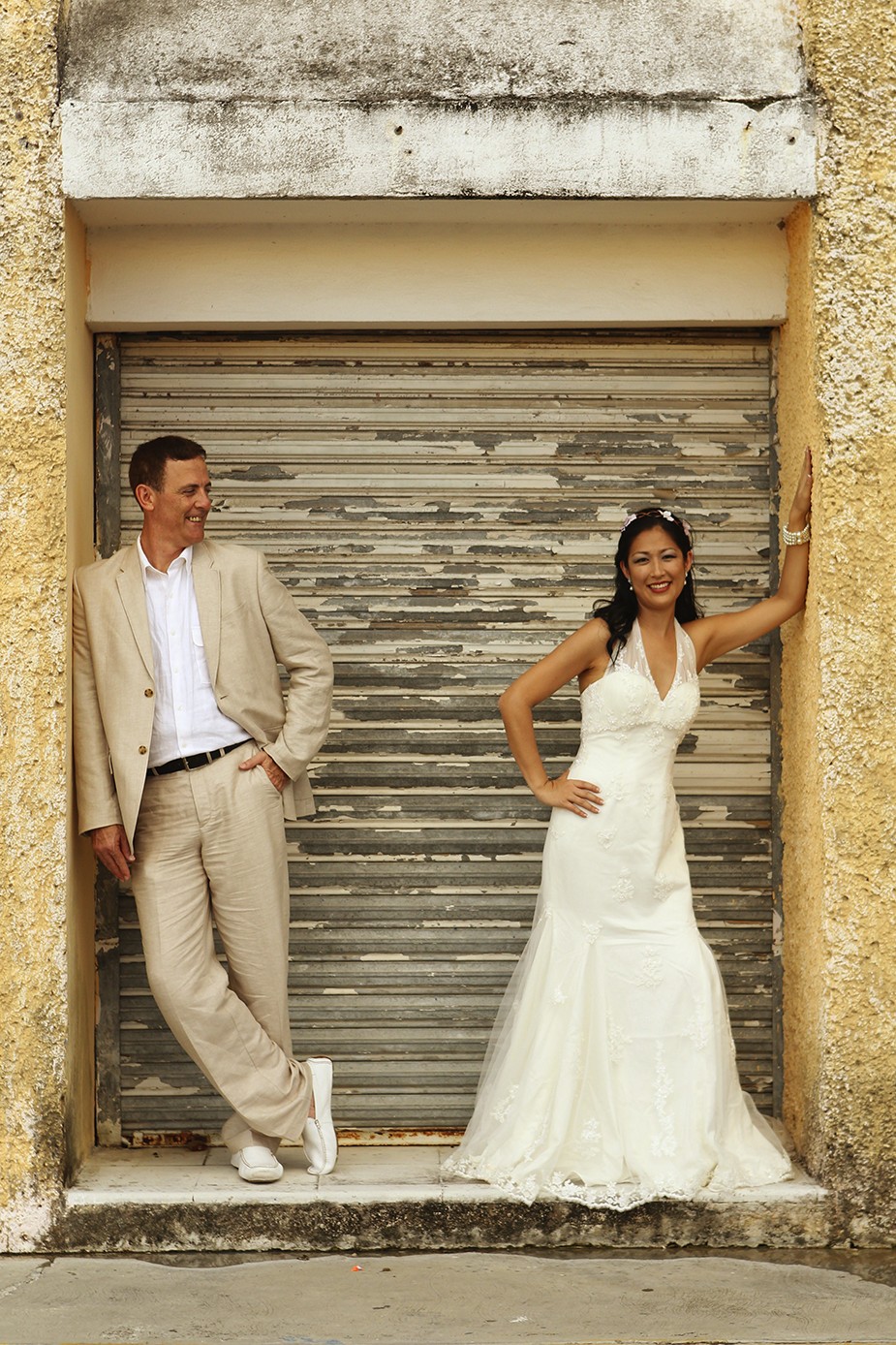
4-8
ABOUT THIS PHOTO An informal portrait of the bride and groom can be just as stunning as a formal portrait. Taken at ISO 400, f/4, 1/640 second.
It is important to find out what the clients expect from you when it comes to portraits; if they are expecting a very formal look, then the relaxed portrait will not work. Nothing is worse than a client opening the proof book, expecting her photos to look a certain way, only to see something else.
Using color
How you use color in your images when you take them and how you deal with color in post-production can also help define your style. You can adjust and change the color of any image using any one of the image-editing tools on the market or predefined software actions that create the same look consistently. These software actions are snippets of computer code that can consistently add a certain color or effect to your images without having to recreate all the steps to get the effect. Any color changes or effects should be done on images that are already great by themselves, not to try to fix an image. Think of the color adjustments as a little styling to the shot, as in Figure 4-9, where I started out using an action from Totally Rad! called Lux Soft, then added one of the Kevin Kubota actions called Soft & Grainy, and then toned the whole image using an Antique Tone action.
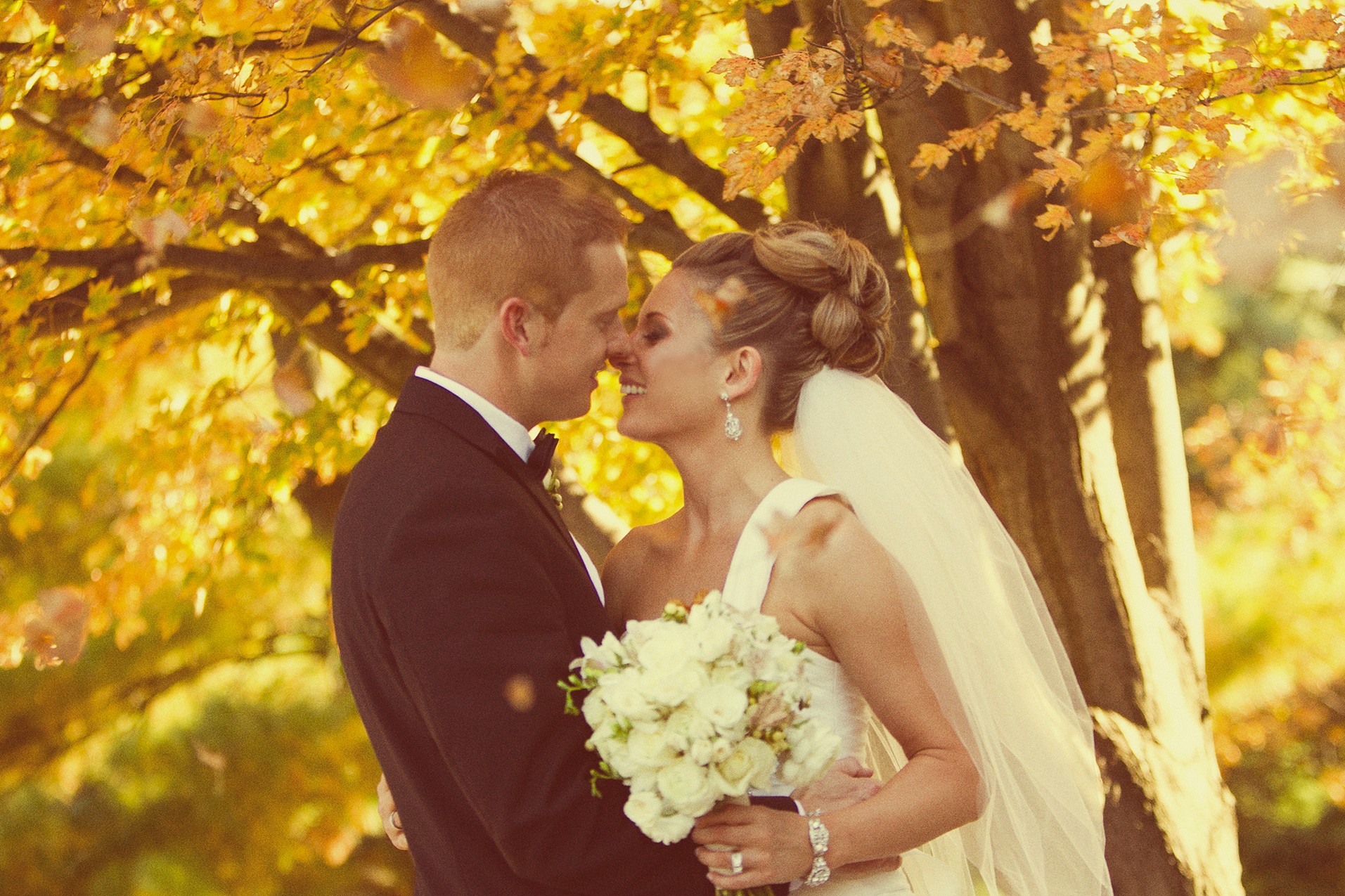
4-9
ABOUT THIS PHOTO Change the feel of the image by changing its colors. Taken at ISO 800, f/2.8, 1/1000 second.
Post-production software and actions are covered in more detail in Chapter 11.
When you use actions to change the color of your images, don’t go overboard: Stick to a few looks that you like and that’s it. Not every shot needs a color treatment; actually, only a handful of the images should be adjusted this way, or the treatment becomes common, and an image no longer stands out.
Black and white
Black-and-white photographs can feel timeless and classic. There are many different ways to change a color digital photo to black and white, and each gives the image a little bit of a different look. Software like Nik Software’s Silver Efex Pro allows you to adjust every aspect of the transformation, and the best part is the color image is still available if you need it. This is one of the real advantages digital images have over film images. With film, to take a black-and-white shot, you needed to have black-and-white film in the camera. Today, you can offer your clients a color and a black-and-white version of the same image, as in Figures 4-10 and 4-11.
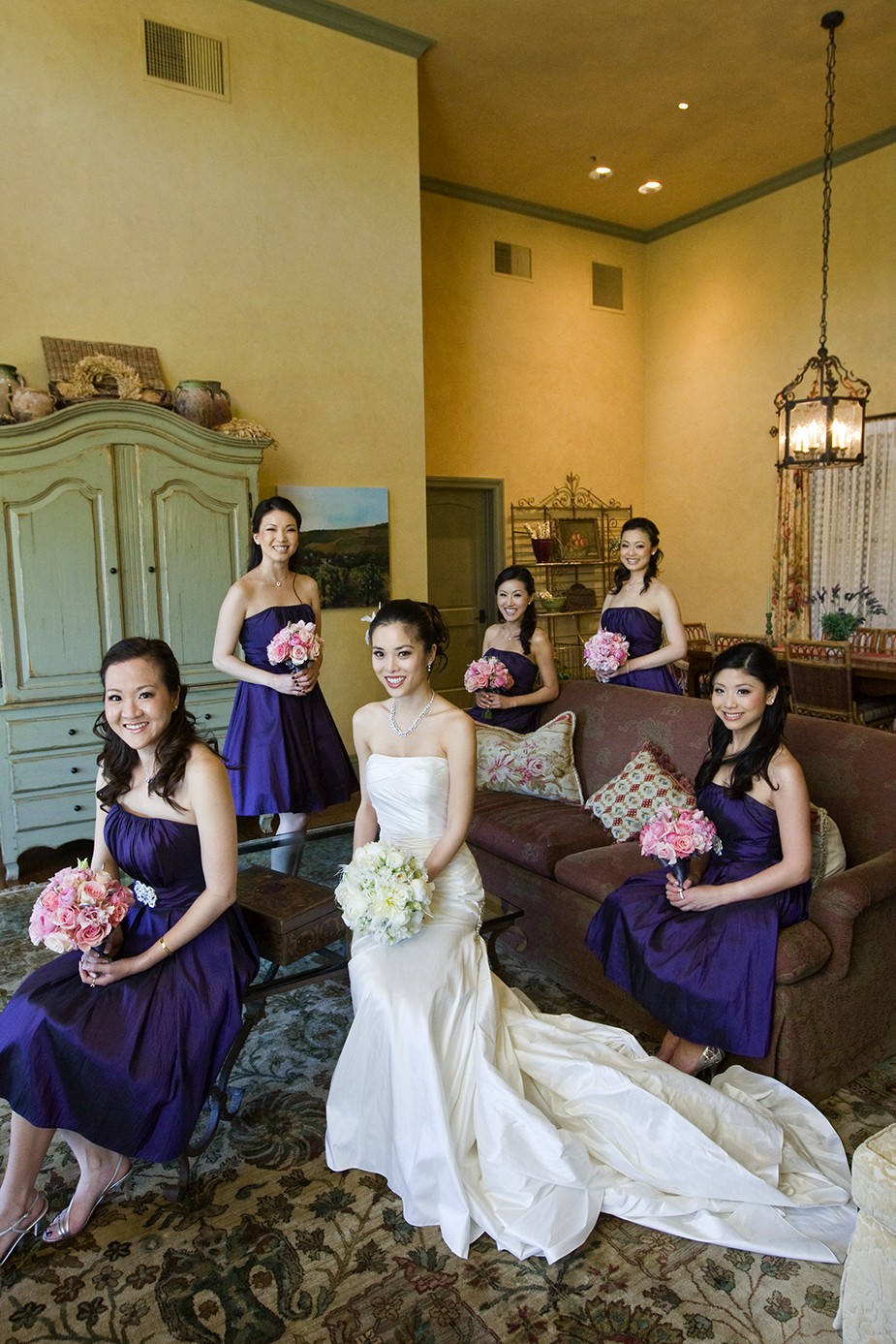
4-10

4-11
ABOUT THESE PHOTO Providing a color version and a black-and-white version of the same image gives your client more choices. Taken at ISO 1600, f/5, 1/60 second.
Branding
Branding is really important; it sends a message about who you are as a business and as a photographer. Your branding needs to be consistent across your business cards, letterhead, and website. When you look at large successful companies, one thing they all have in common is great branding. You need to treat your business with the same time and energy as you would a very important client. This means that you should spend the time (and money) making sure that the company branding portrays the right message, that you are a professional wedding photographer. Many times photographers fall into the “I’ll get to it later” or “this is good enough” trap when it comes to their Web sites and business cards. The thought is that you can change the logo or create better business cards later, but the truth is that once you have started to hand out cards or send people to your Web site, it is very difficult to change the brand. It is much better to start with a good logo and brand right from the start. Here are some things to consider when creating your brand:
• Hire a graphic artist. Just as you expect your clients to hire a professional wedding photographer for their big day, you should hire a professional for your really important projects. A professional designer can create a look for you based on your style and business. This makes you look more professional. Don’t spend a good deal of time learning to take great photographs and invest in great gear only to skimp on the branding side of your business. Having a professional design will pay off in the long run.
• Start with your logo. Your logo is really important, because it is the one thing that can tie all the other pieces of branding and marketing together. Your logo needs to reflect your style. If your style of photography is traditional, your logo needs to have a traditional look and feel, but if your style is cutting-edge and hip, your logo needs to convey that. My logo as shown in Figure 4-12 was designed using my initials for a simple, clean, and professional-looking design. The circle in the middle represents the circle that you see when you look through the viewfinder of a camera. When it is red, it often means that the image is in focus and ready to be photographed. Looking farther in, there is a small ying and yang shape that divides the circle representing harmony and balance. I believe several elements such as light, composition, color, exposure, and emotion make up that that perfect photo, and my logo represents that concept.

4-12
ABOUT THIS PHOTO The Kenny Kim logo.
• Business cards. Your business card is one of the most important pieces when it comes to branding yourself. Your card needs to impress everyone you hand it to. When photographers hand me their cards, I immediately judge them, right or wrong, by the style, design, and even the feel of their cards. My opinion is based not on their work but on the thought and care that they put into their business cards. Make sure that you are proud of your card and that you have it with you at all times. My card (shown in Figure 4-13) has my logo embossed on one side with the information on the other. I use a square card that tends to stand out from the normal 3.5" × 2" rectangle. I also suggest getting a business card holder, which keeps your cards looking new even if they have been in your pocket or bag for a while.
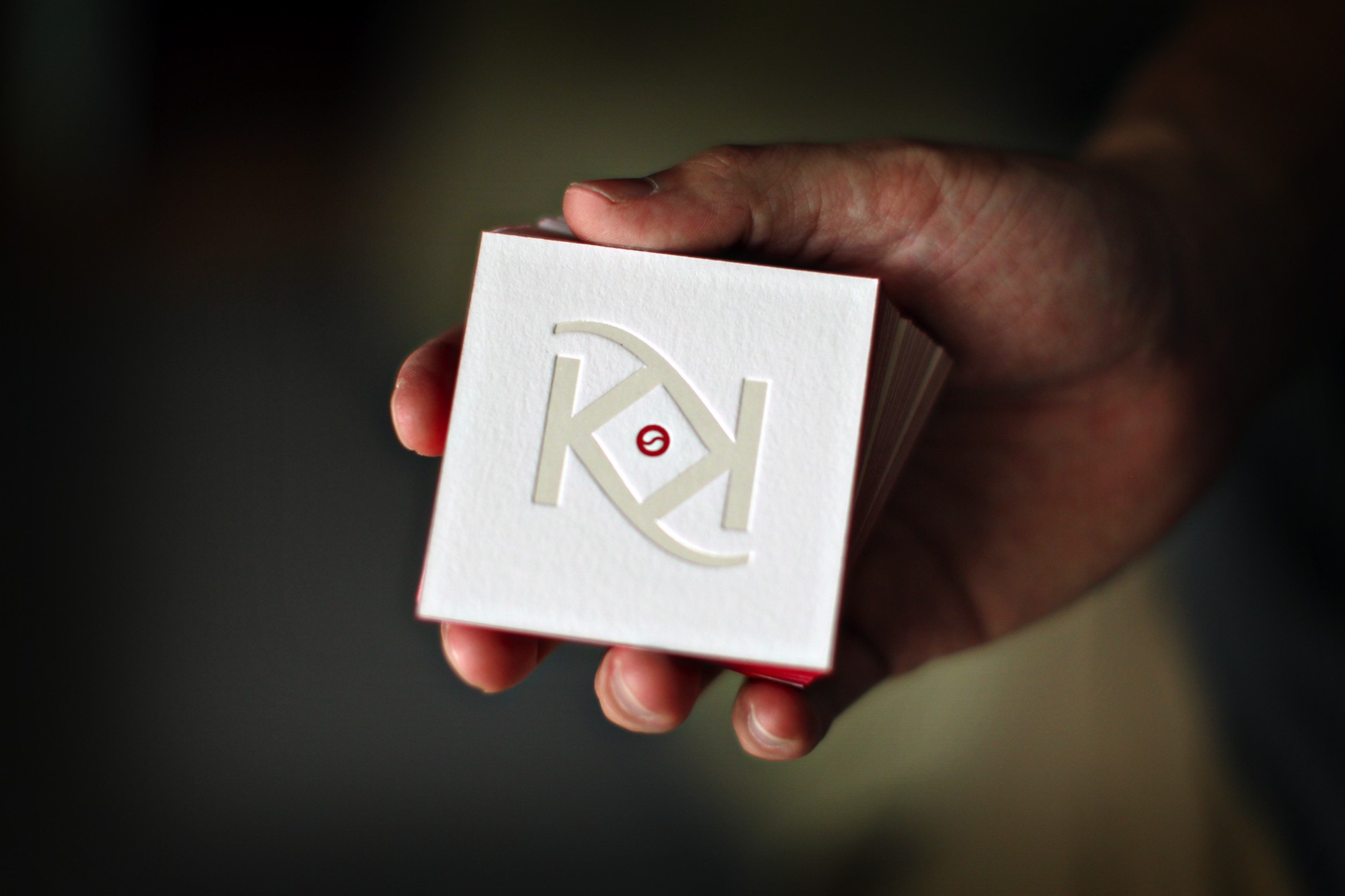
4-13
ABOUT THIS PHOTO The Kenny Kim business card.
• Be consistent. It is important to have consistency across all your different branding pieces. Your business card should have the same feel as your letterhead (that an easy one). Your Web site should have the same feel as any advertisements, your business card, and so on. If I get a card from a photographer and go to his Web site, I want to immediately know that it is the same person. This means that the color scheme, the logo, and even the fonts are the same, which gives the whole package the same look and feel.
Marketing your style
One of the most important things you can do when marketing yourself is to pick photos that you believe represent your style.
If you are a traditional photographer, a great posed shot of the couple or wedding detail will be better than a candid shot of the bride and groom dancing or a close-up of the ring exchange during the ceremony. If you tend to be more photojournalistic, then go with the shots that tell a story and portray the raw emotions.
You need to send the right message to attract the right clients.
Traditional marketing
Traditional marketing consists of placing advertisements in wedding magazines and newspapers and banner ads on wedding Web sites, and sending out mailings or even flyers and postcards at wedding expos. There is a lot of competition in the wedding photography business, and you can no longer just rely on ads in magazines and wedding Web sites or flyers to get you business, but that doesn’t mean you should ignore the traditional marketing outlets. You need to make sure that you are keeping up with the competition and that when prospective clients look at a wedding magazine or Web site or go to a wedding expo, they see you represented there.
The real problem with traditional marketing is that you can get lost in a sea of advertisements. It is tough to stand out from the crowd. One key factor in helping you stand out from your competition, especially in the traditional marketing locations, is to only show your very best work. When it comes to traditional marketing, the message should be part of a whole campaign that includes the blog, Web site, and social media; you need to make sure that your message is clear. One of the best ways to do this, as mentioned in the previous section, is to hire a graphic designer to help create your brand and your marketing materials. Use traditional marketing to drive prospective clients to your Web site and blog so that they can get more information on you and your services.
Web site and blog
Every business needs a Web site, and a wedding photographer is no different. A Web site enables your prospective clients to find you and look at your work at their leisure. The great thing about a Web site or blog is that you can control the content, and you can update it as often as needed. You can use the feedback from your clients to fine-tune the site and make sure that the message you want to get out is actually getting out.
There are many prepackaged Web site templates that you can use to create a good-looking Web site in just a few hours. This might be a way to start, but because the templates are available to everyone, other photographers might be using the same design. The idea is to stand out from the crowd, not be a part of it. Using a professional graphic artist or Web designer can make a big difference and ensure that your traditional marketing and your Web marketing, and even your social media, all have the same look and feel.
A Web site is made up of different parts, and there are a few things that every photographer’s Web site needs to have — the most important being a gallery of images that show off your best work. These are the images that your prospective clients will see and judge you on. It is really important to make sure you are showing your best work and that you update the work often. Another key section is the contact information that needs to be up-to-date and easily found. It is no good if the prospective clients can’t get in touch with you to set up a meeting.
Many Web sites are set up as blog sites that allow you to share more information than a static site. The blog idea is that you are writing about and sharing images from your latest endeavors, and that these are related to the work you do (see Figure 4-14). It would not be useful for a wedding photographer to blog about landscape photography or sports photography unless it can somehow be tied back into wedding photography. Blog entries can help keep visitors to your Web site entertained, but to do that you need to make the commitment to update the blog regularly. This could mean that you post a few images from every wedding (with the client’s permission of course) or once a week with a recap of your current work.
Social media
Social media has changed the world and has really changed the way that people find and hire vendors, including wedding photographers. People no longer simply search the Internet or the Yellow Pages; now prospective clients can ask their contacts on social media sites who they recommend, and those contacts can ask their contacts, and so on. This makes marketing difficult because the word of mouth is now on the Internet. The guests can see how you conduct yourself at one wedding and can spread word of it far and wide.
You need to get out on sites like Facebook and Twitter. Your clients expect it, and you can build relationships with people around the world based on how you portray yourself on the Internet. Once a client has seen your work, gotten a positive review from a friend, and read about you on your blog, the client feels like she knows you and your work before even talking to you.
It is vital to send a positive message to people and to use all these platforms to promote your business.
Getting published or featured
Getting published can be a great way to market yourself. It isn’t as hard as you would think, but it can be rather intimidating. There is no magic formula. You first find the magazines (or Web sites) that match your style of wedding photography and then (and here is the hard part) submit your work!
You might doubt that your work is good enough to be published, but there is no way to know this until you try. Just don’t let it get you down if the images are not accepted. It might mean that you need to work on your craft and get better images or that your images were simply not the right fit. That does not mean that the publication or Web site will not consider the images again in the future.
Don’t be afraid of failure; instead use it as a platform to learn.
All publications have their own set of requirements for submissions, and they usually are looking for images that fit with their style. For example, don’t bother sending in the bright, colorful candid shot of the bride by the water to a magazine that is dominated by traditional black-and-white portraits. Study the images that are already featured; you will see that there is a repeated pattern with the images the publishers choose. Look for and photograph those details and moments next time you are shooting a wedding, and you will have a better chance of being accepted for publication. You can find contact information and submission guidelines in most publications or on their Web sites.
For example, build a Twitter account and tie it with a Facebook business/fan page. You can see my Facebook page in Figure 4-15. Be sure to update those pages showing your latest work. These pages are now showing up more and more on search engines and, by keeping the work fresh, you will get more business. It is important to keep in mind that everything you do can now be seen when you are connected through social media to this extent, so it pays to be up front and honest. If you are a part-time wedding photographer just starting out, make sure this is clear.
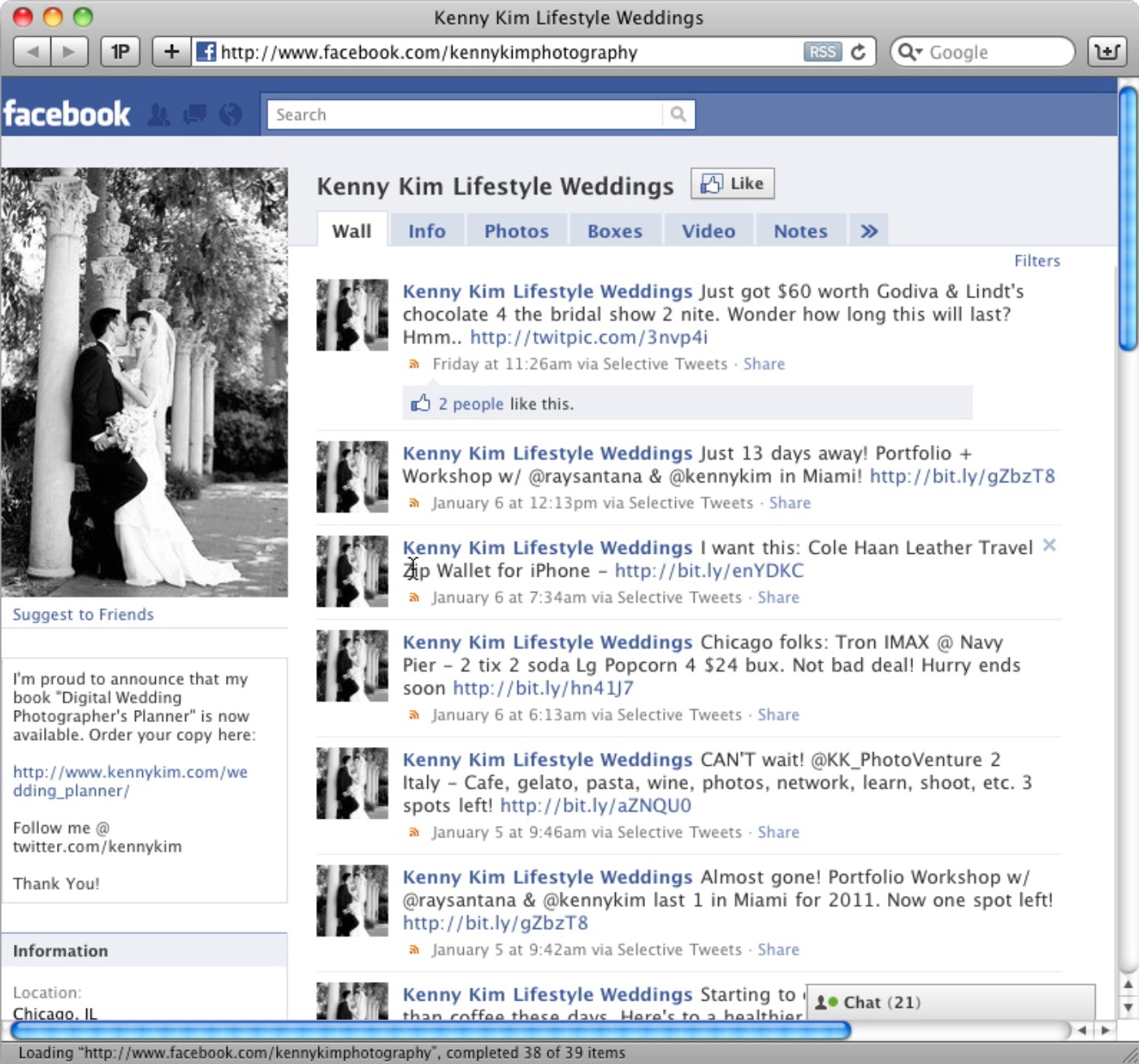
4-15
ABOUT THIS PHOTO The Kenny Kim Facebook page.
One way to drive traffic to your social media sites is to tag the images with the bride’s and groom’s names so that their friends can find the images easily and see them from their accounts. Just make sure you ask their permission first.
Assignment
Experiment with Composition
The best way to work out your style is to experiment with your composition and see what speaks to you artistically. Do you feel the need to be in total control of every aspect of the image or can you shoot on the go, capturing great images to tell a story? Try creating some formal, posed photos where you are in control of the whole scene and try some photojournalistic photos where you capture the scene as it unfolds with little posing and control. Regardless, you need to be able to tell a story, and this means you need to know exactly what your subject is and why it is important. Using the basic rules of composition, you can draw the viewer to the part of the image you want to emphasize. Choose a photo that has composition you really love and post it to the Web site to share.
When people look at your images, or any image, the eye is drawn to the parts that are in focus first. By using a shallow depth of field, you can make sure that viewers are looking at what you want them to, no matter where it is placed in the image. This moment was captured using an aperture of f/2.8, which blurred the background and kept the focus on the hug, and a shutter speed of 1/200 to make sure the action was frozen. Because there was quite a lot of light, I was able to use an ISO of 640, keeping the noise to a minimum.
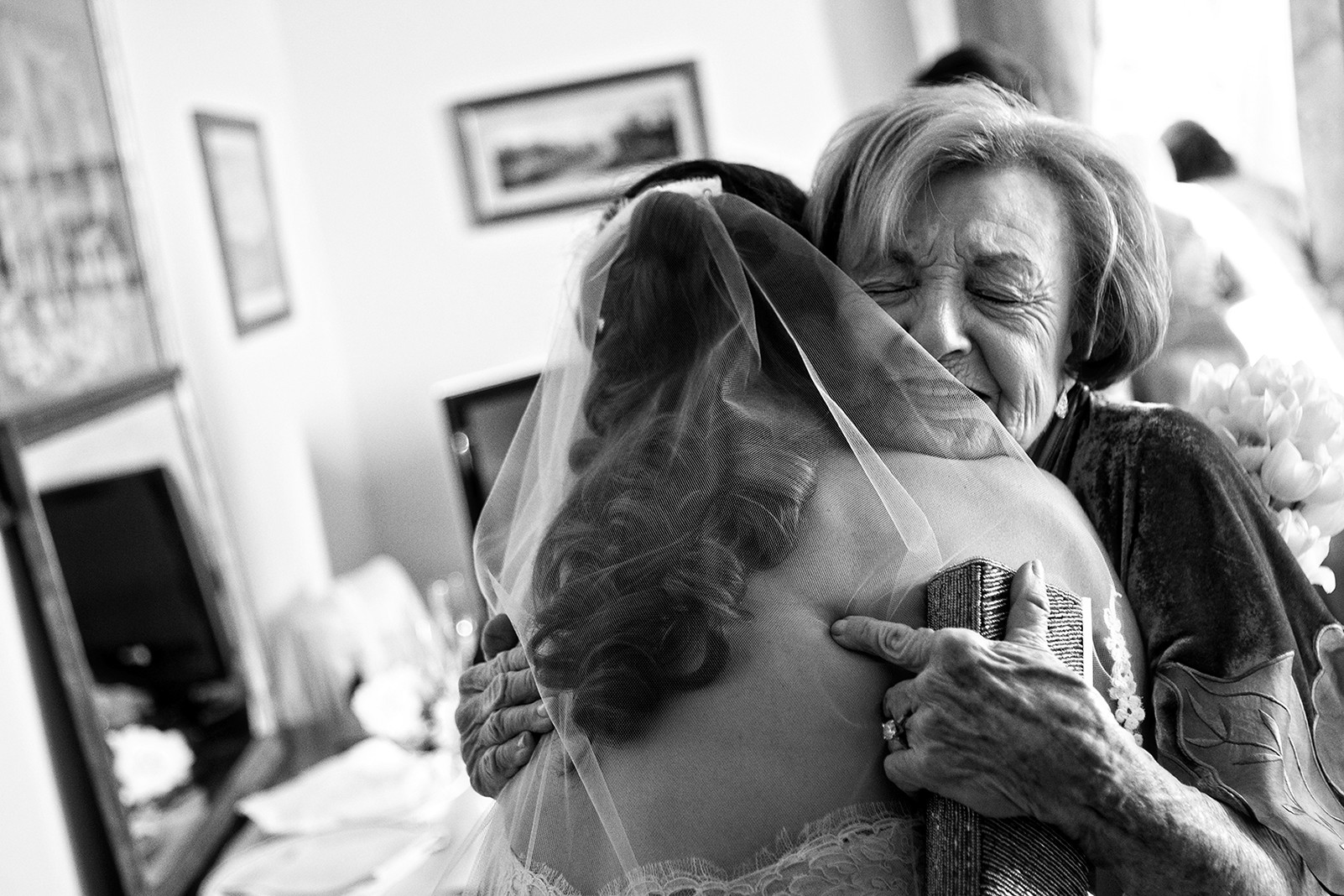
Remember to visit www.pwassignments.com after you complete the assignment and share your favorite photo! It’s a community of enthusiastic photographers and a great place to view what other readers have created. You can also post comments and read encouraging suggestions and feedback.
